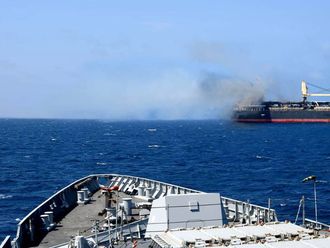Sana’a: Key dates in Yemen since a transition accord was signed by the regime and the opposition in November 2011 calling for a national dialogue.
The accord, signed in Riyadh following an 11-month popular revolt in which hundreds of people were killed, resulted in president Ali Abdullah Saleh’s ouster after 33 years in power and his replacement by his deputy Abd Rabbo Mansour Hadi.
2011
November 23: Saleh signs a deal with the parliamentary opposition, drawn up by Gulf states, to transfer power to Hadi, in exchange for immunity from prosecution for him and his family.
The accord also provides for a national dialogue aimed at drawing up a new constitution and preparing for legislative and presidential elections.
2012
February 25: Hadi sworn in days after receiving, as sole candidate, 99.8 per cent of valid votes in a presidential poll. The ceremony is overshadowed by a suicide bombing, claimed by Al Qaida, that kills 26 troops in the southeast.
February 27: Saleh formally steps down.
March 4: 185 soldiers and at least 25 suspected Al Qaida gunmen killed in the south.
April 9-14: More than 220 killed in clashes between the army and Al Qaida.
May 12 — mid-June: The army begins a major offensive to retake the cities of Zinjibar, Jaar and Shaqra from Al Qaida. More than 560 people are killed.
May 21: Some 100 soldiers are killed and hundreds more wounded when a suicide bomber blows himself up among them in Sana’a. Al Qaida claims responsibility.
September 12: In Sana’a, more than 200,000 people demonstrate to demand Saleh’s immunity be lifted, accusing him of fuelling violence.
2013
March 18: Launch of national dialogue, sponsored by the UN and Gulf states. It is boycotted by an alliance of groups demanding federalism or full independence for the south of the country.
Early September: Clashes between Al Houti rebels and Islamists in which 42 people are killed.
2014
January 25: Feuding factions wrap up months of national dialogue, agreeing to draw up a new constitution via a referendum and install a federal state.
February 10: A presidential panel agrees to transform Yemen into a six-region federation. The plan is opposed by Al Houthis and southern separatists.
April 29: Yemeni forces launch an operation to drive Al Qaida fighters out of southern towns.
August 4: Tens of thousands of supporters of Al Houthi rebels take to Sana’a’s streets demanding the government’s ouster.
September 18: Clashes between Al Houthi rebels and Islamists, backed by troops.
September 21: Al Houthi rebels seize government headquarters, state radio and military sites in Sana’a, and the premier, Mohammad Basindawa, resigns. More than 270 people are killed. Rival groups sign a UN-brokered peace deal, providing for a rebel withdrawal from the capital and the formation of a new government.
October 9: At least 47 people are killed in a suicide bombing in Sana’a’s Al Tahrir Square, which targets a gathering for supporters of Al Houthi insurgents. The attack is the latest claimed by Al Qaida.
October 14: The rebels capture the strategic Red Sea city of Hudeida.
November 7: Yemen announces a new government, which is rejected by the rebels.
The UN Security Council imposes sanctions on Saleh and two allied rebel commanders.
2015
January 20: Al Houthi militia fighters attack President Hadi’s residence and seize control of the presidential palace.












